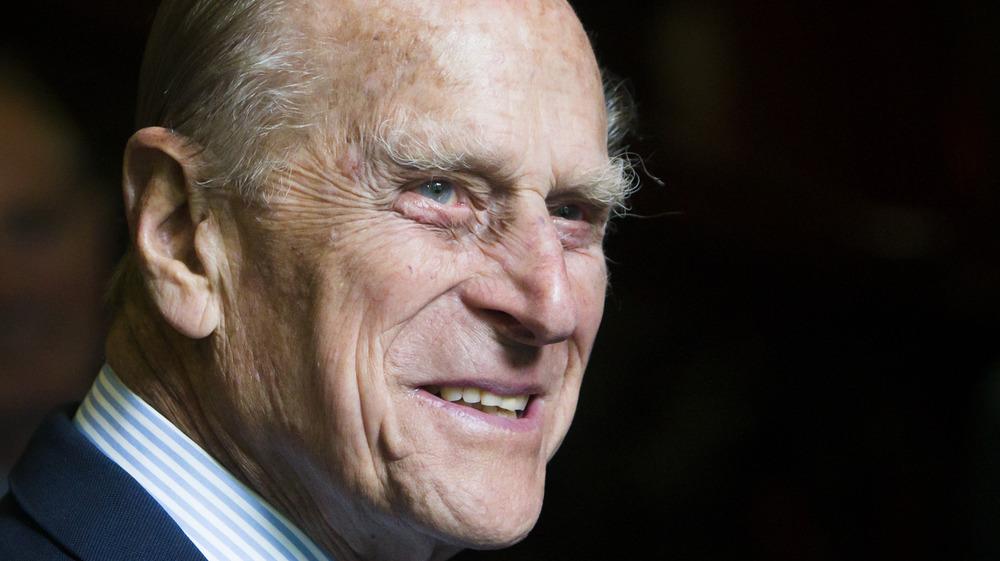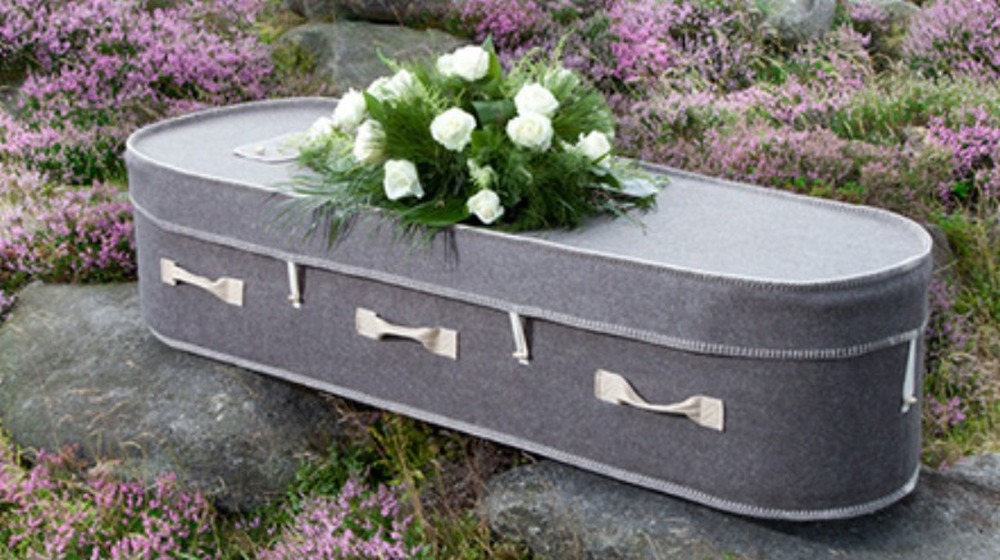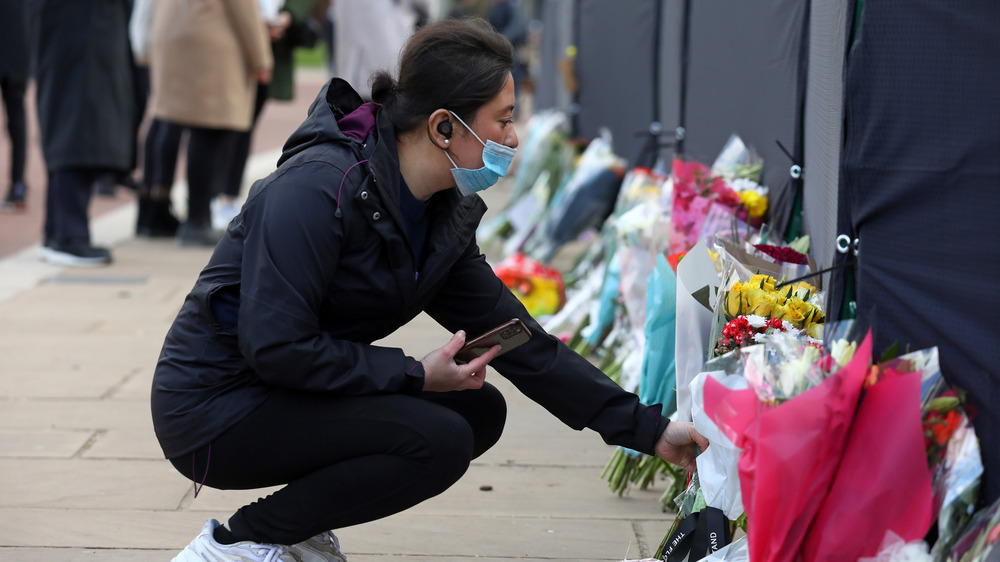New Details On Prince Philip's Casket Are Raising Eyebrows
Tributes to Prince Philip have begun circulating, giving us glimpses into a complicated but service-driven man, who, as Martin Ivens wrote for Bloomberg, was perhaps the world's "best-known stay-at-home husband." Family members have given us rare, personal insights. Prince Harry honored his grandpa's barbecue skills, his banter, and his cheek. Prince William hinted at who he was as a great-grandfather: the kind of person who picked up his great-grandkids in a horse-drawn carriage to teach them a thing or two about mischief and adventure (via Instagram). Many of the 780 civil society organizations that Prince Philip once worked for have also offered tributes (via Civil Society News). The World Wildlife Fund, for example, called the prince a "tireless champion for the environmental cause and a passionate ambassador for conservation issues around the world for decades," noting that Philip had done work in 50 countries on five continents on the organization's behalf.
Beyond written and spoken salutes, the Duke of Edinburgh's funeral will also symbolically honor his life. A personal flag will be draped over his coffin to represent his heritage. And Buckingham Palace recently announced that, during Philip's funeral procession, the prince will be transported via a purpose-built Land Rover that Philip, himself, helped to design. As per The Sun, the Land Rover in question is a hybrid and chosen to honor the prince's work promoting environmental sustainability. The Sun has also reported, to the surprise, skepticism, (and even consternation) of many, that the royal family chose a woolen, 100 percent biodegradable casket for the Duke of Edinburgh.
Believe it or not, woolen caskets have a long, English history
The idea of a woolen coffin isn't as new-age as it might sound. Were Prince Philip to be laid to rest in wool, in some ways, his funeral would pay tribute to UK history. In the 1660s, as per Atlas Obscura, England passed a law ensuring that the dead be wrapped only in wool to stimulate the country's wool industry. Those burying their loved ones were required to swear that they had not shrouded the deceased in anything "made or mingled with Flax Hempe Silke Haire Gold or Silver." Witnesses were furthermore required to confirm woolen burials, and authorities issued fines to enforce the law.
There's a second reason for the rumors that the Duke of Edinburgh would have wanted to be buried in wool. It seems that the wool coffin manufacturer in question has strong ties to Buckingham Palace, which knows the quality of its workmanship (via The Sun). Namely, the parent company also made Prince William and Prince Harry's military wedding garbs. Then there's the fact that Prince Charles (himself an environmentalist) once invited its director, Thomas Hainsworth, to an event where he joked: "I have discovered a company that makes a woolen coffin — coffins, ladies, and gentlemen, to die for."
The Firm has yet to confirm or deny the details of Prince Philip's coffin. But despite its silence, there's good reason to believe that the idea of a woolen casket is little more than a sensationalist rumor.
Will the Duke of Edinburgh really get a woolen coffin?
If Prince Philip were to be buried in wool, he wouldn't be the first to break royal tradition. In 2002, Princess Margaret was cremated because (allegedly) she thought of burials as "too gloomy" (via The Guardian). It's not, then, a breach of etiquette that makes the Duke of Edinburgh's reported funeral plans unlikely. It's this: a wool coffin isn't practical for Prince Philip, environmentalist or not. The 100 percent biodegradable coffin that might soon be Philip's final resting place is structured, per the company's website, of a "100 percent recycled cardboard frame." For the purposes of ground burials, woolen coffins are, undoubtedly, environmentally friendly. However, as one Twitter user posted, without substantial alteration, a wool casket would be unlikely to survive long in the prince's resting place.
Buckingham Palace recently confirmed that Philip will be laid to rest in the royal vault located at St. George's Chapel, home to 10 British monarchs. After Queen Elizabeth dies, his casket will be moved to George VI Memorial Chapel, to be next to his wife, (via Tatler). Up until now, royal tradition dictates that coffins should (and have been) lined with lead, and not cardboard. There's a very good reason for that. As per Metro, lead-lined coffins can be sealed effectively to keep moisture out, and toxins in. For safety reasons, UK law furthermore requires any casket kept above ground to be sealed. In line with this, Daily Mail reports that the prince's coffin is actually oak, and, of course, lead-lined.


